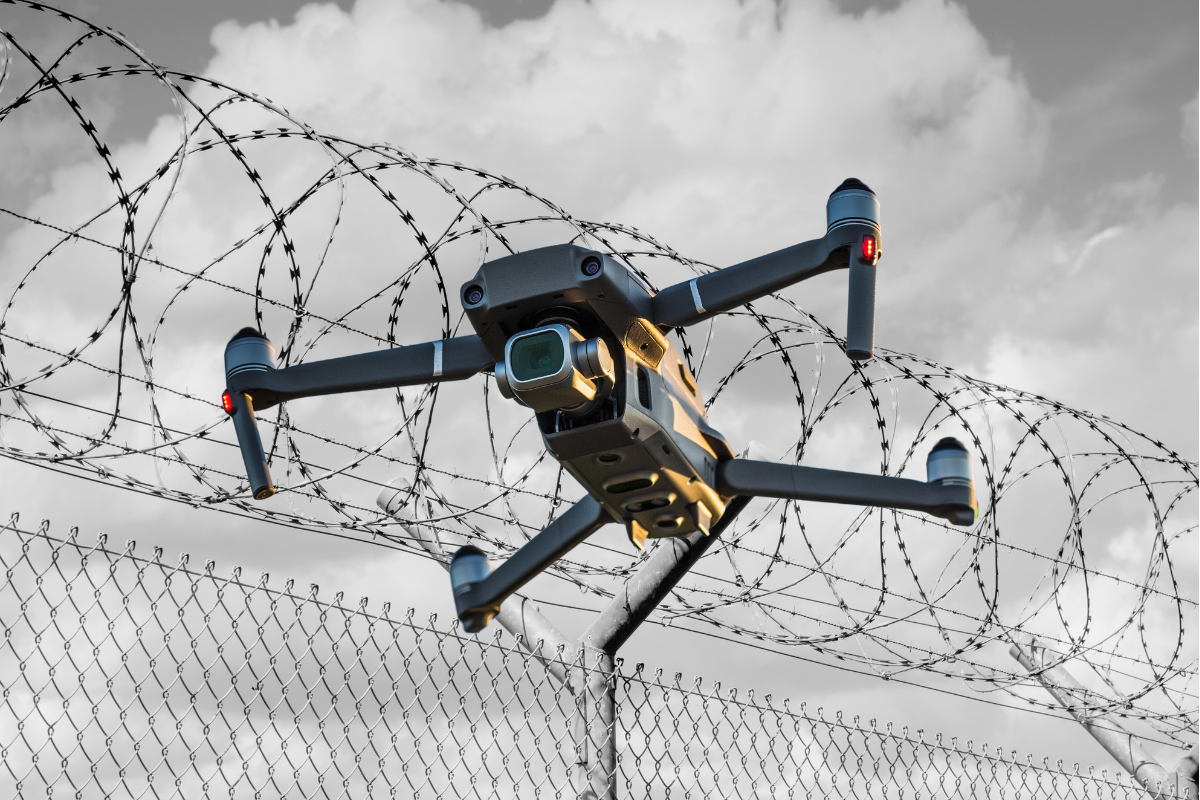In a troubling escalation of prison security breaches, authorities are increasingly alarmed by the use of drones to smuggle contraband—including drugs, weapons, and mobile phones—into correctional facilities across the United Kingdom. The recent discovery of detailed prison layouts on the dark web has raised concerns. These blueprints could enable more precise drone deliveries, possibly introducing firearms into the prison.
The chief inspector of prisons, Charlie Taylor, has expressed grave concerns over the frequency of drone incursions at high-security institutions such as HMP Manchester and HMP Long Lartin in Worcestershire. They house some of the most dangerous offenders, including terrorists and organized crime leaders.
Taylor warns that the frequent drone deliveries pose a major security threat. They could be used to smuggle serious weapons, including firearms.
The leaked prison blueprints, which detail the locations of sensors and cameras, have exacerbated the situation by providing criminal organisations with the information needed to orchestrate more effective smuggling operations.
In response, emergency security measures have been implemented in various prisons in England and Wales. The National Crime Agency (NCA) is investigating the breach. In response to the threat, prison officials have increased vigilance and patrols.
The sophistication of these smuggling operations is evident in the tactics employed by criminal gangs. Reports indicate that gangs are recruiting skilled drone pilots to execute precise deliveries, sometimes transporting payloads of up to 1.3 kilograms directly to cell windows.
These payloads have included drugs, phones, and weapons like “zombie knives.” This raises fears that firearms could be next.
The implications of such security breaches are profound. The introduction of firearms into prisons could lead to increased violence, hostage situations, and even orchestrated escapes.
There are concerns that drones could help inmates escape by lifting them over prison walls. However, this is considered unlikely.
In response to these challenges, the Ministry of Justice has initiated measures to bolster prison security. There are investments in advanced CCTV, anti-drone netting, and other countermeasures.
They aim to detect and intercept drones before they deliver contraband. We are also working with law enforcement to dismantle the criminal networks behind these smuggling operations.
Despite these efforts, the persistent ingenuity of criminal organisations poses a continuous challenge. The evolving tactics, like changing delivery times to evade detection, require a quick response from prison authorities. The situation shows we must invest in tech and training. We need to fight the threat of drone smuggling.
The broader implications of these security breaches extend beyond the immediate threat of violence within prison walls. Smuggling contraband undermines the correctional system.
It hinders rehabilitation and risks public safety. So, stopping drone smuggling is vital for prison security. It’s also key to upholding the law and keeping the community safe.
The rise in drone-facilitated contraband smuggling represents a significant and evolving threat to prison security in the UK. New drone tech and detailed prison layouts have emboldened criminals.
They are now attempting bolder smuggling operations. We must use technology, intelligence, and inter-agency collaboration. A coordinated response is essential to mitigate this threat and secure correctional facilities nationwide.



